Last year, Nissan sold almost 330,000 Rogues in the U.S., making it by far the brand\’s most popular model.
For 2017, the compact crossover utility vehicle has added a new model, a hybrid that competes with the very successful Toyota RAV4 Hybrid—of which 44,000 were delivered last year.
We recently spent four days and almost 380 miles with the hybrid Rogue, to see if its fuel economy lives up to its EPA ratings.
DON\’T MISS: 2016 Toyota RAV4 Hybrid: Gas Mileage Review (Feb 2016)
We also wanted to see how the Rogue Hybrid compared to the RAV4 Hybrid we tested 11 months ago.
In the Toyota, we covered 450 miles over roughly the same test cycle: about two-thirds highway and one-third around-town lower-speed use.
Our Rogue Hybrid test even had the same blustery Northeastern winter weather, with temperatures ranging from 25 to 40 degrees F.
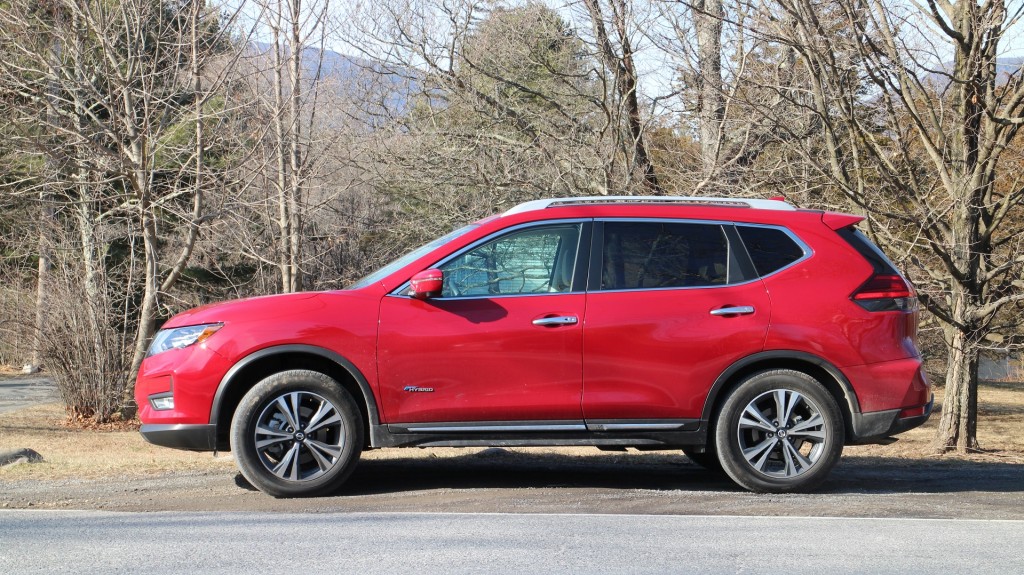
2017 Nissan Rogue Hybrid, Catskill Mountains, NY, Jan 2017
That 2016 RAV4 Hybrid delivered an indicated 30.4 miles per gallon per the trip computer, against an EPA rating of 32 mpg combined (lower than Toyota\’s projected 33 mpg).
Our new hybrid Rogue test car was fitted with all-wheel drive, making it a direct comparison to the 2016 RAV4 Hybrid, offered only in AWD form.
The 2017 Nissan Rogue Hybrid AWD is EPA-rated at 31 mpg city, 34 mpg highway, and a combined 33 mpg—1 mpg higher than the AWD Toyota compact crossover. (The front-wheel-drive version comes in at 33 city, 35 highway, and 34 mpg combined.)
ALSO SEE: 2017 Nissan Rogue – review
Over our 377-mile test, our AWD Rogue Hybrid returned an indicated 28.4 mpg—14 percent below the combined rating, versus a 5-percent difference for the Toyota.
Note that our tests aren\’t really rigorous enough to determine effective fuel economy to the tenth of a mile per gallon; conditions, routes, and often weather vary.
But we consider them a good directional indicator of how close many buyers may get to the rated gas mileage, always depending on their personal driving styles.
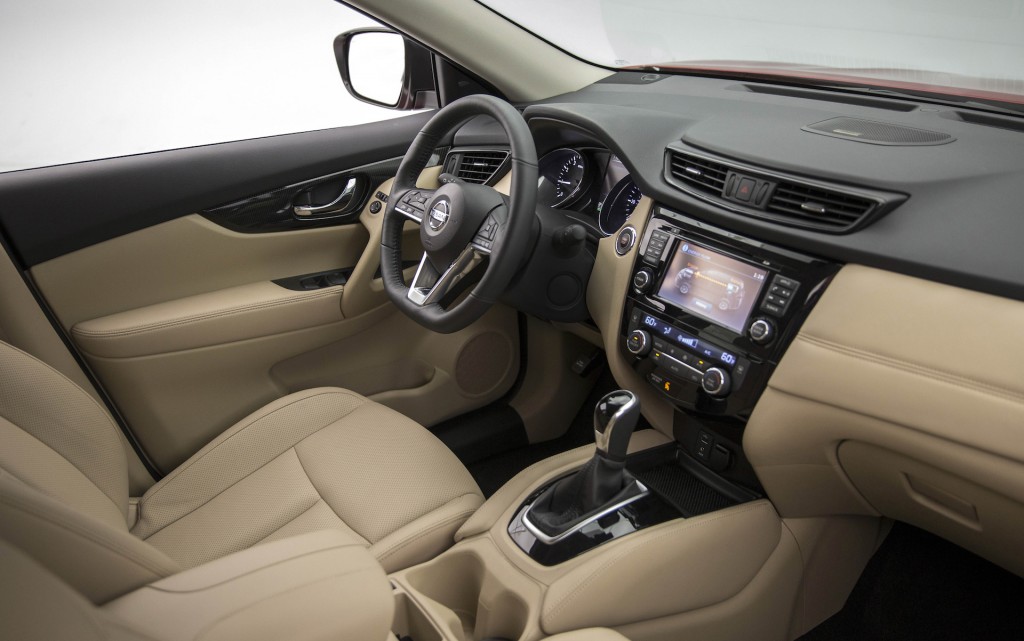
2017 Nissan Rogue Hybrid
The hybrid Rogue\’s higher rating against the RAV4 Hybrid was a slight surprise, because the Toyota uses a more powerful two-motor hybrid system similar to the previous-generation Prius.
Out of the pair of motor-generators, the one that powers the vehicle is rated at 105 kilowatts (141 horsepower).
In combination with a 150-hp 2.5-liter 4-cylinder engine tuned to run on the Atkinson cycle, the RAV4 Hybrid\’s powertrain output is a combined 194 hp.
READ THIS: 2016 Nissan Murano Hybrid slips quietly into lineup, minimal volume expected
The Rogue Hybrid, on the other hand, has only a single 30-kw (40-hp) electric motor, sandwiched between the 141-hp 2.5-liter 4-cylinder engine and an adapted version of Nissan\’s continuously variable transmission (CVT). Total peak powertrain output for the Rogue Hybrid is 176 hp.
A further difference between the two is that Nissan has retained mechanical all-wheel drive, like the old Ford Escape Hybrid.
The hybrid RAV4 blends torque from the gasoline-electric powertrain up front and an additional 50-kw (67-hp) electric motor between the rear wheels that kicks in only as needed.
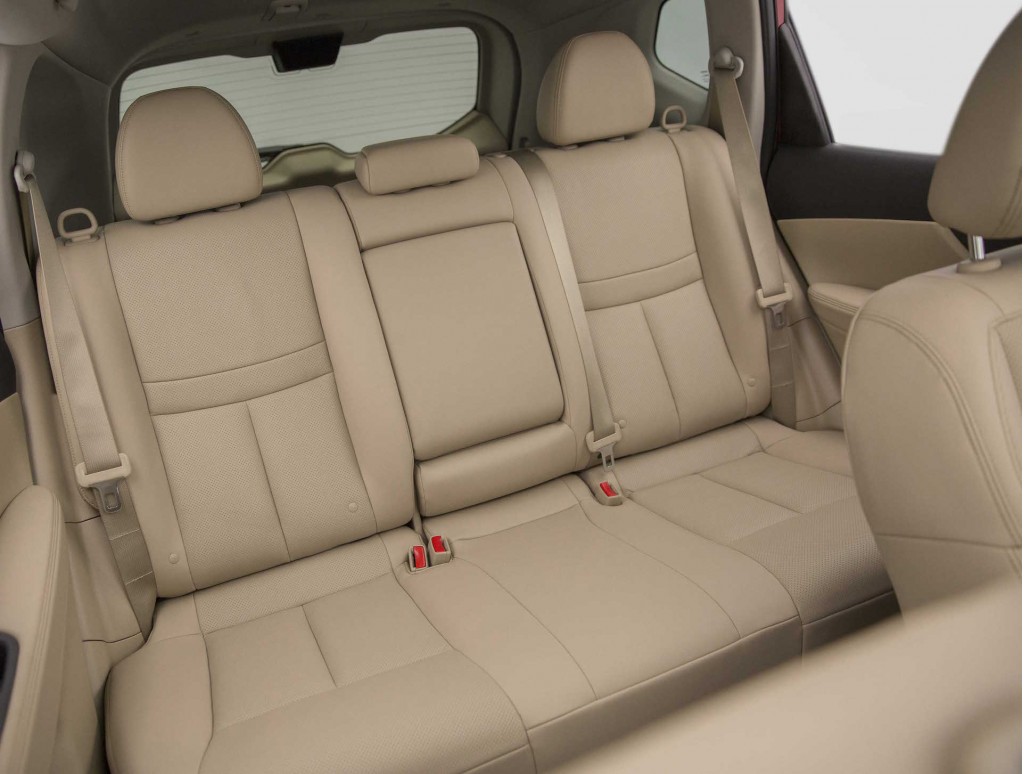
2017 Nissan Rogue Hybrid
Nissan\’s powertrain is a more powerful version of the previous mild-hybrid system fitted to the Pathfinder Hybrid and the Murano Hybrid, which used a 15-kw (20-hp) motor in the same setup.
The Pathfinder Hybrid was yanked off the market after a single model year (2014), and Nissan has suggested the Murano Hybrid is likely to sell less than 1,000 units in total.
We found the Pathfinder Hybrid unsatisfying and woefully short of its rated fuel economy during a winter test three years ago.
CHECK OUT: 2014 Nissan Pathfinder Hybrid: Gas Mileage Test Disappointing (Feb 2014)
But Nissan clearly has higher hopes for the Rogue Hybrid, and the capacious SUV may in fact sell decently well.
While our 28.4 mpg wasn\’t within the 10 percent we consider to be the maximum reasonable variation from the 33-mpg EPA combined rating, it was slightly better than the 27-mpg combined rating for the conventional Rogue Hybrid.
And most importantly, the Rogue\’s noise suppression and sound insulation was good enough that many engine starts and stops weren\’t noticeable with the audio system on.
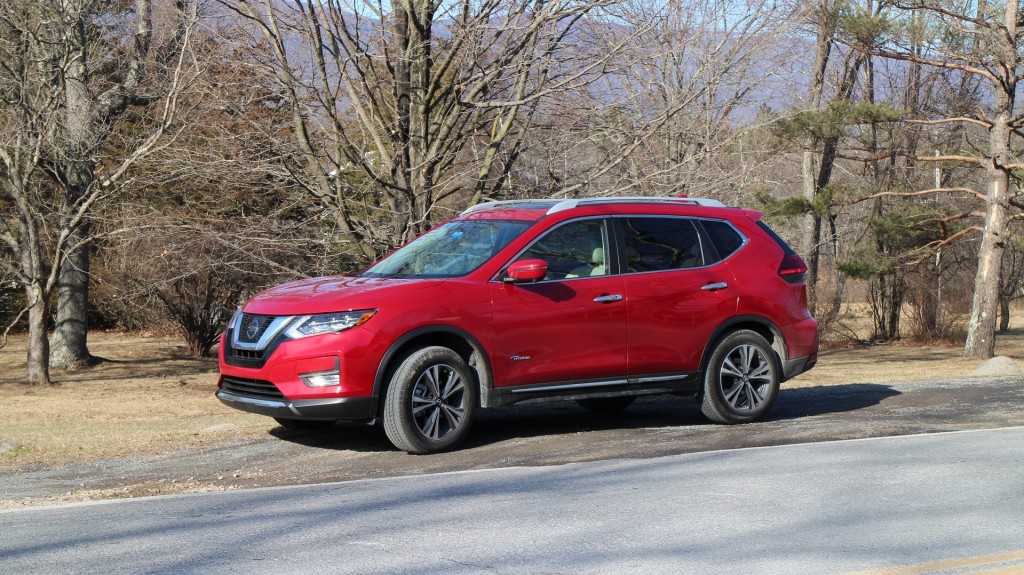
2017 Nissan Rogue Hybrid, Catskill Mountains, NY, Jan 2017
That essentially camouflaged the frequent engine starts from a system that still has only the weakest ability to accelerate in all-electric mode.
The Rogue Hybrid can move away from rest on electricity alone—quite sloooooowly, if you accelerate gently on level roads—but you won\’t make any friends in traffic if you do so.
Still, the 30-kw motor provided more electric boost and more electric-only running and the engine switched off more frequently than in the less powerful and heavier Pathfinder Hybrid.
No Rogue is particularly sporty, and any driver will have to get used to the CVT behavior, in which engine speed is decoupled from road speed and acceleration will spin the engine up to high revs if needed while the car gradually gathers speed.
Nissan\’s CVTs aren\’t as bad in that respect as they were a few years ago, but they\’re still not as good as those from Subaru and a few others who\’ve focused on improving the driver experience in CVT-equipped vehicles.
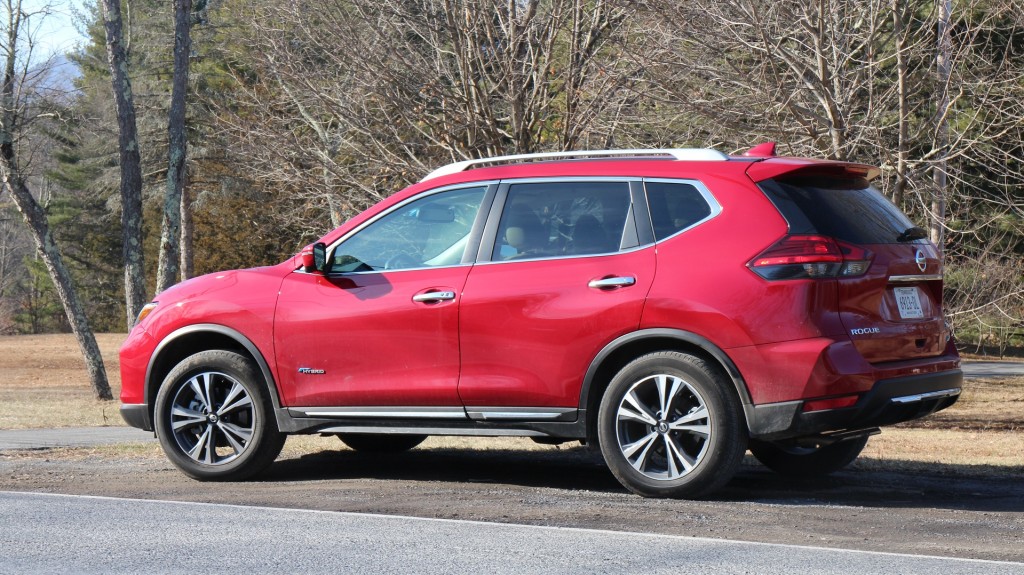
2017 Nissan Rogue Hybrid, Catskill Mountains, NY, Jan 2017
In the case of the Rogue Hybrid, the usual \”CVT nature\” is slightly alleviated by the immediate torque of the electric motor at the start.
But we also noticed a few pauses and abrupt changes as the powertrain control software clutched in the electric motor, then switched on the engine, while spinning up the CVT.
It\’s not horrible, but two-motor systems are simply smoother across the board.
Nissan does get points, however, for good and largely imperceptible blending between regenerative and friction braking.
Based on the Pathfinder Hybrid system, our expectations for the Rogue Hybrid were low, so overall we were pleasantly surprised by its capabilities.
It has the Rogue\’s same large cabin (one of the bigger among compact crossovers) minus a bit of cargo volume, decent interior finishes, and expressive styling, plus higher fuel economy—and, down the road, perhaps the generous purchase incentives Nissan is known for.
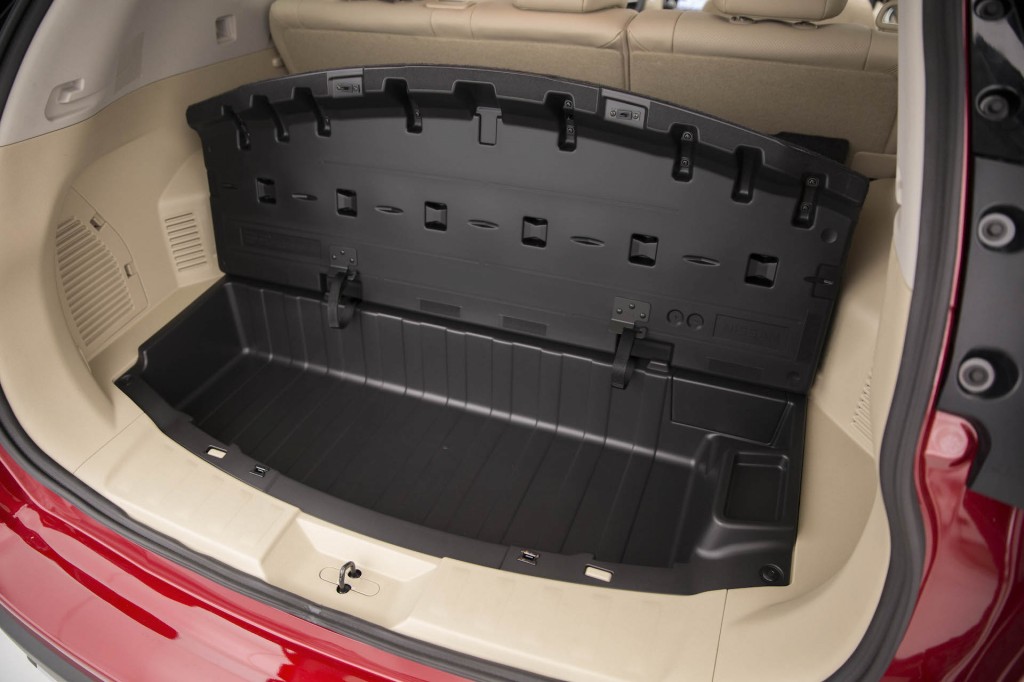
2017 Nissan Rogue Hybrid
A few other notes from our four-day drive:
- In 40-degree F weather, the engine stayed off less than a minute at stops with battery capacity showing more than half-full; that\’s less than Toyota
- The dashboard climate controls were simple and intuitive
- Nissan\’s infotainment systems continue to suffer from small screens, slow operation, and non-intuitive icons and command structures
- The load-bay floor in the Rogue Hybrid is several inches higher than that of the regular Rogue, cutting cargo volume with the rear seat up from 39.3 to 27.3 cubic feet
- It does, however, have a compartment under the back half of that floor; the battery sits ahead of it behind the rear seat
- The vestigial third-row seat on the regular Rogue is not offered in the hybrid version; it\’s no loss
Prices for the base 2017 Nissan Rogue Hybrid start at $27,440, or about $4,000 more than a base conventional Rogue. Our Nissan Rogue Hybrid SL AWD started at $32,050; a mandatory delivery fee will add almost $1,000 more.
Options on our test vehicle included the \”Palatial Ruby\” maroon metallic paint job (that\’s really what it\’s called), and a Premium Package consisting of a power-operated panoramic sunroof that extended over the rear seat ,and emergency crash braking.
_______________________________________
Follow GreenCarReports on Facebook and Twitter.

